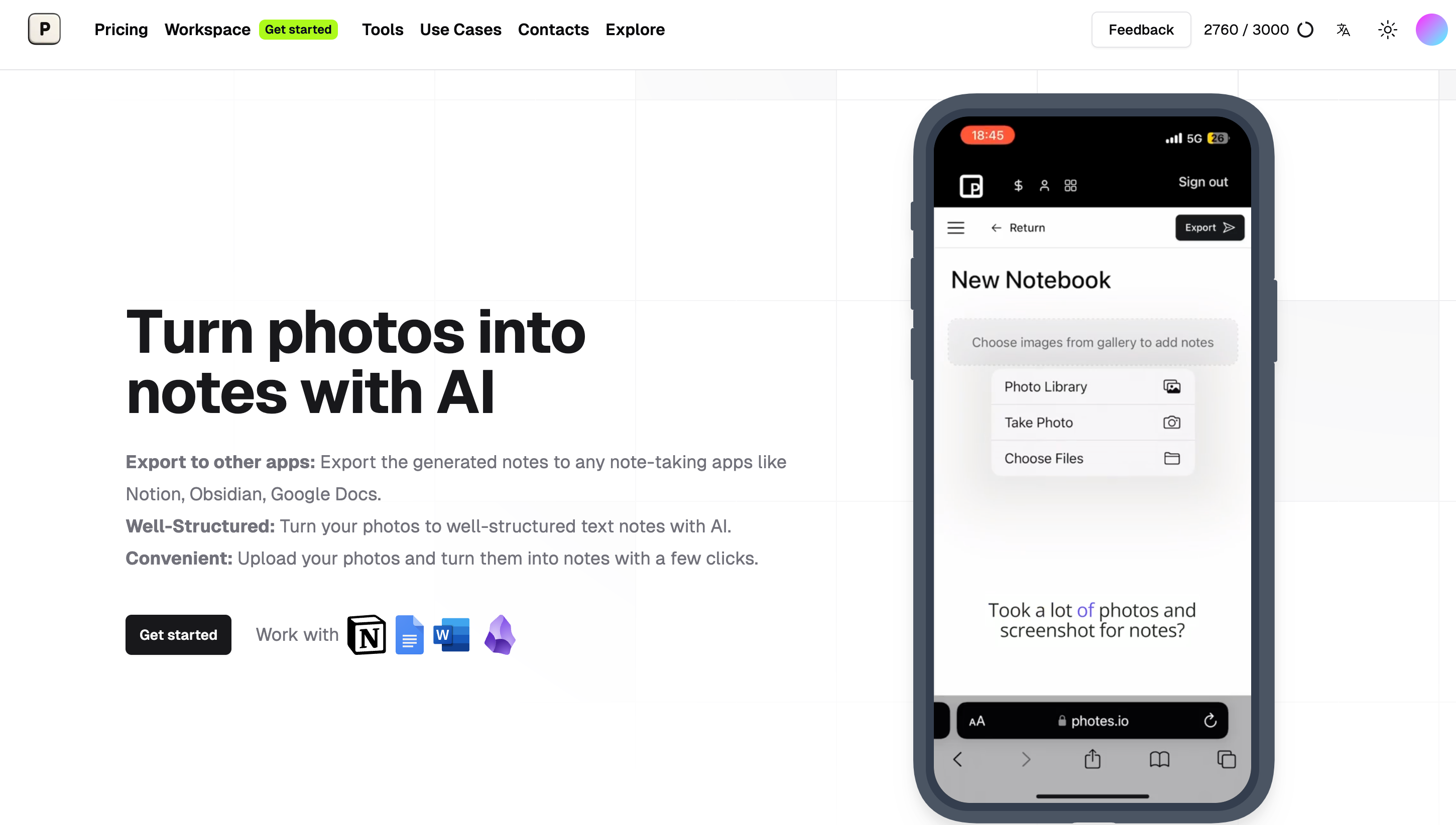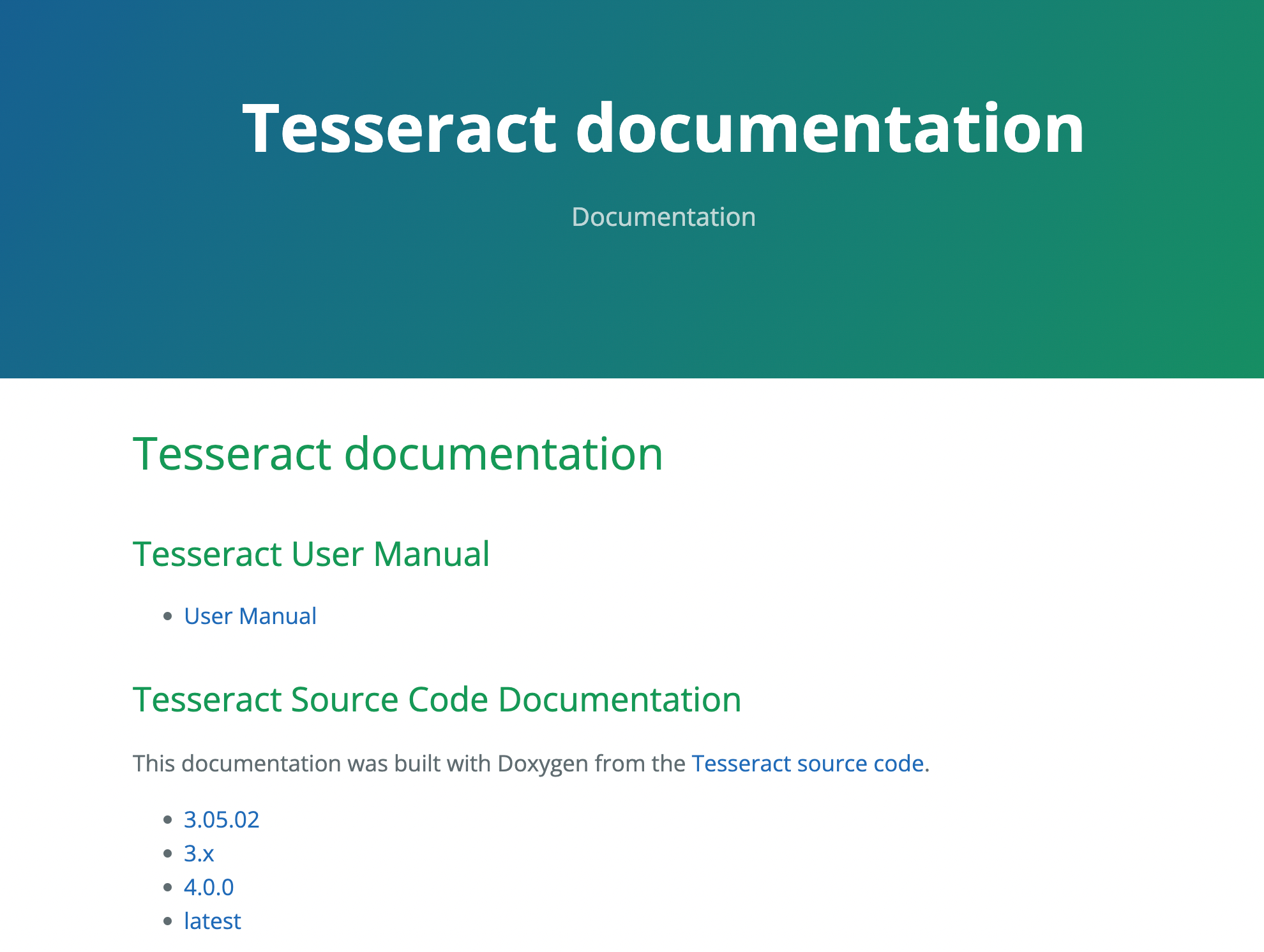Top 5 Image-to-Text AI Tools in 2025
Updated on

You may have noticed that the image-to-text feature is needed in many aspects of your life. Whether it's for data preservation, accessibility, or content creation, an efficient image-to-text AI tool is indispensable in 2025. From scanning documents to extracting text from pictures for editing, these tools make your life a great deal easier and are setting the pace for other tech advancements. Here's a dive into the top five image-to-text converters that are turning heads in the AI arena, including the celebrated Photes.io.
What is Image-to-Text Technology?
Before we unpack our top selections, let’s delve into what image-to-text technology entails. At its core, image-to-text is a technology that employs Optical Character Recognition (OCR) to enable computers to read text within scanned documents, photos, and images. This technology is pivotal in converting text from its original image file into a usable format across various applications, essentially acting as an eye for computers.
Why Leverage Image-to-Text AI Tools?
In today’s fast-paced digital environment, businesses and individuals alike are inundated with pictures and documents that require categorization and easy retrieval. Here’s where image-to-text AI tools come into play, automating the tedious task of manual text extraction and offering multiple applications such as digital note-taking, content archiving, and real-time translations.
Automating the transcription of images into text:
- Eliminates manual data entry errors.
- Speeds up document processing time.
- Enhances productivity in data management.
The Top 5 Image-to-Text AI Tools in 2025
In no particular order, here are the five image-to-text AI tools that are a cut above the rest this year.
1. Photes.io

When it comes to precision, Photes.io has been making significant waves. This application stands out with its remarkable accuracy rate in converting images to text, even in poor-quality images. Known for its adaptive AI algorithm, Photes.io learns from each image it processes, making each subsequent conversion more precise.
Strengths:
- High Accuracy: It performs very well in distinguishing text from background images, achieving near-perfect conversions.
- Multilingual Support: Offers impressive support for multiple languages, making it ideal for international use.
- User-Friendly Interface: Designed for ease of use, with straightforward features and functionalities.
Use Cases:
Photes.io is perfect for professionals dealing with multilingual documents, educators compiling study materials, and businesses archiving international contracts.
2. Adobe Scan

Adobe Scan is synonymous with reliability. The tool connects easily with other Adobe products, making it a prime choice for those embedded in the Adobe ecosystem. Its image-to-text capabilities are enhanced by its cloud-based operations, ensuring access to converted documents from anywhere.
Strengths:
- Integration: Easy connection with Adobe Acrobat, facilitating enhanced editing and storage.
- Cloud Access: Syncs with Adobe Document Cloud, offering convenient access and sharing capabilities.
- Automatic Detection: Recognizes and captures content intelligently during scanning.
Use Cases:
Adobe Scan is best suited for users who frequently work with PDF files and require uniformity and integration with other document editing tools.
3. Google Cloud Vision

Google Cloud Vision remains a robust player in the image-to-text arena, thanks to Google's extensive AI research. This tool isn't just about extracting text; it also offers powerful image labeling, object detection, and classification.
Strengths:
- AI-Powered Insights: Beyond text extraction, it offers insights into the visual elements of imagery.
- Scalability: Delivers robust performance for high-volume image processing tasks.
- Integration Friendly: Utilizes APIs to integrate with existing applications smoothly.
Use Cases:
Its comprehensive capabilities make it ideal for developers building applications that need to analyze and interpret complex images rapidly.
4. ABBYY FineReader

ABBYY FineReader is an OCR heavyweight, earning its stripes in the world of document digitization. The tool is renowned for its precision in converting scanned documents into editable formats, along with its batch processing capabilities.
Strengths:
- High-Volume Processing: Designed for batch scanning, making it perfect for large projects.
- Multi-format Support: Converts to numerous formats, including DOCX, XLSX, and more.
- Textual Accuracy: Known for preserving formatting and layout during conversion.
Use Cases:
This tool is best for businesses with colossal document libraries needing conversion and archiving, legal firms scanning hefty law files, and libraries digitizing historical documents.
5. Tesseract OCR

Tesseract, an open-source OCR project, has prided itself on delivering free and effective image-to-text conversion. Its continued open-source development ensures it remains updated with the latest advancements in machine learning.
Strengths:
- Cost-Effective: As an open-source solution, it provides powerful services without licensing costs.
- Community Support: Extensive community support and contributions keep the software evolving.
- Customization: Users can modify and enhance features to better fit specific needs.
Use Cases:
Ideal for developers and learners who want a customizable OCR tool or those on a budget seeking effective image-to-text conversion.
The Future of Image-to-Text Technology
While these tools provide a glimpse into the world of image-to-text technology, the realm is expanding rapidly with new features and enhancements continually being introduced. We can anticipate improvements in real-time processing, language support, and the utilization of AI and machine learning to further hone accuracy and efficiency.
Moreover, as AI ethics remain under discussion, one might expect increased focus on data security and privacy controls to ensure that the vast amounts of personal and business data processed by these tools are protected.
Conclusion
The landscape of image-to-text AI tools is booming, with players like Photes.io providing accurate and dependable services. Whether you're a professional transcriptionist, a business owner, or a tech enthusiast, there’s a tool tailored to meet your needs. As highlighted, each tool has its unique selling points and applications, making it crucial to consider your specific requirements when selecting the right image-to-text AI technology.
In an era where every second counts, coupling your workflow with the right AI tool can propel you miles ahead, saving you time, effort, and resources. As we journey further into 2025, the capabilities these tools offer signal a transformative leap in how we interact with image-based data. Stay ahead of the curve by incorporating the optimal image-to-text AI tool into your operations and watch it transform your data processing landscape.